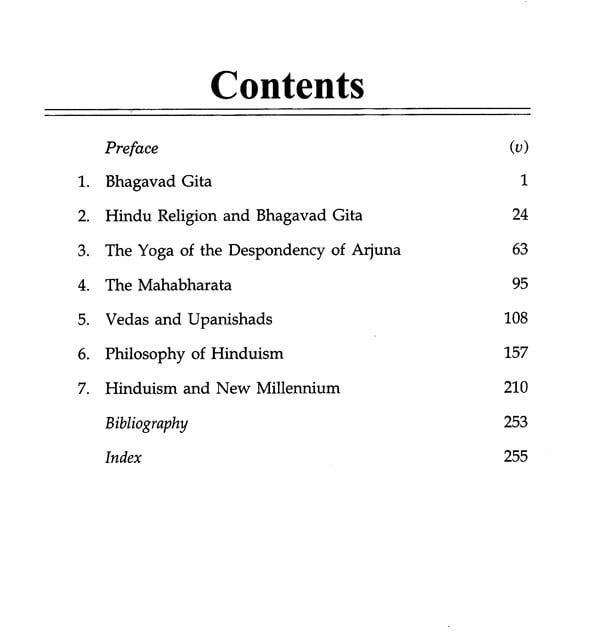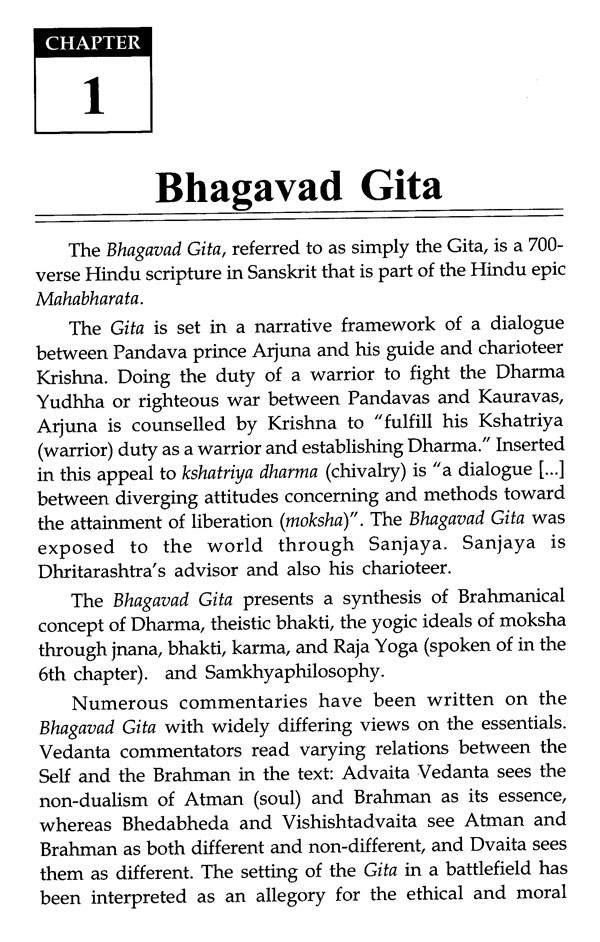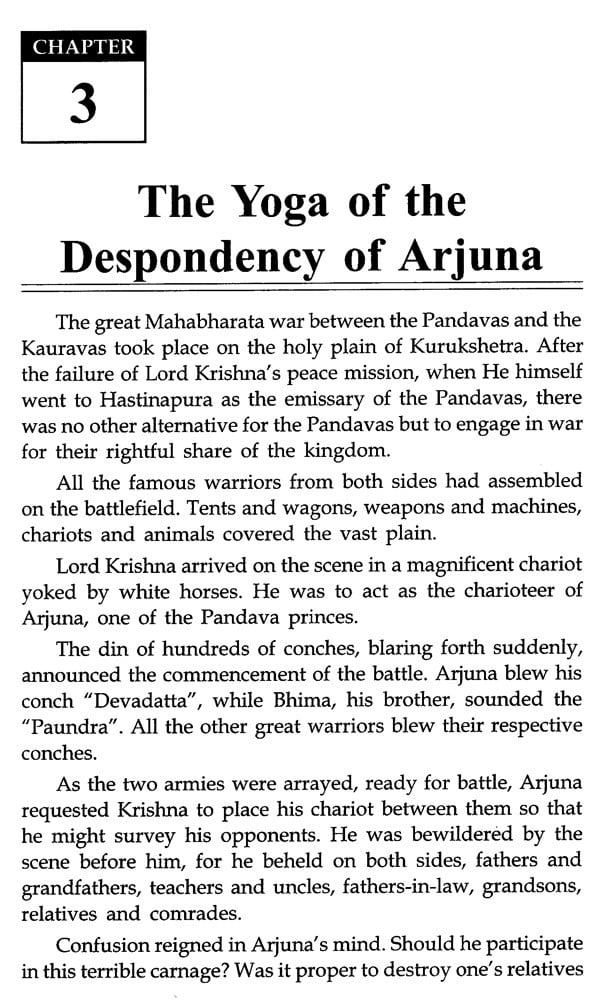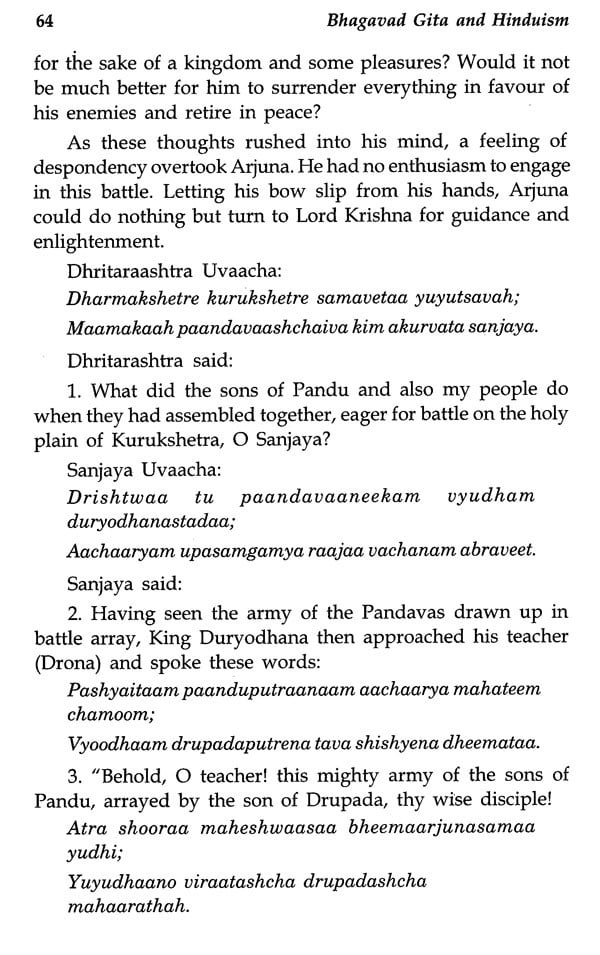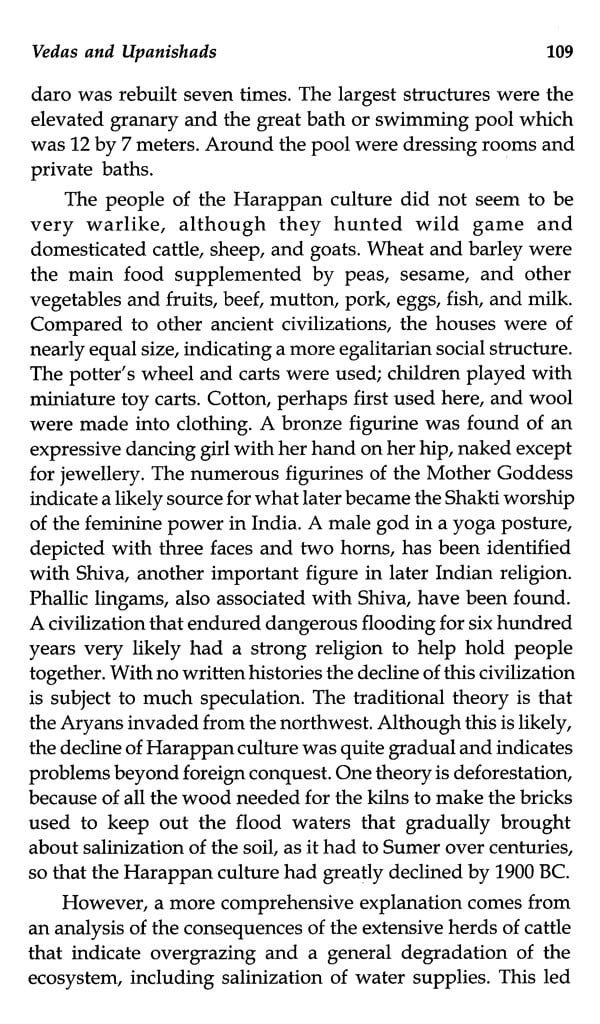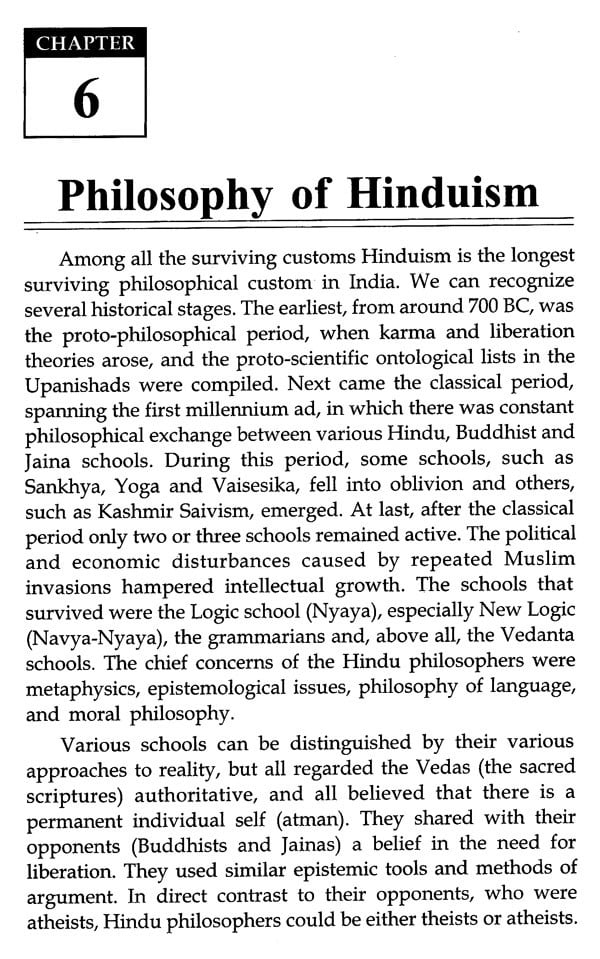
Bhagavad Gita and Hinduism
Book Specification
| Item Code: | NBZ509 |
| Author: | Kapil Khanna |
| Publisher: | Empty Canvas Publishers |
| Language: | English |
| Edition: | 2021 |
| ISBN: | 9788194921967 |
| Pages: | 263 |
| Cover: | PAPERBACK |
| Other Details | 8.50 X 5.50 inch |
| Weight | 260 gm |
Book Description
The Bhagat Gita is one of the Supreme works of Sanskrit and indeed of all world literature. It is the most well-known and widely translated part of the Sanskrit Mahabharata (constituting chapters 6.23 to 6.40 in the Poona edition of the Mahabharata). in the great Mahabharata war, on the battlefield of Kuruksetra (kuru’s field), kuru’s descendants, split into two sides, fight over the ancestral kingdom. Arjuna Pandava is the most brilliant warrior on the winning side, and his chariot driver is his maternal cousin, brother-in-law, and great friend Krishna Vasudeva, who is also, as Arjuna comes to realize, the great God Vishnu Mahayana in human form. Just before the war commences, Arjuna asks Krishna to drive him out between the massed armies, and at the sight of those opposing him, he suffers an existential collapse and declares he will not fight. Hinduism, a religious custom of Indian origin, constituting the beliefs and practices of Hindus is one of the most erstwhile spiritual customs in the world. Hinduism is often compared with a giant Banyan tree-in its shade a thousand faiths Bloom. The word Hindu is derived from the river Sindhu, or Indus. Hindu was first and foremost a geographical Term that referred to India or to a region of India (near the Sindhi) as long ago as the 6th century BC. The word Hinduism is an English word of more recent origin. The Bhagat Gita is the sealing achievement of this Hindu synthesis, incorporating various religious traditions. According to Hiltebeitel, bhakti forms an essential ingredient of this synthesis, which incorporates bhakti into the brahmanical fold. According to deutsch and Dalvi, the Bhagat Gita attempts “to forge a harmony” between different strands of Indian thought: jnana, dharma and bhakti.
The Bhagavad Gita presents a synthesis of Brahmanical concept of Dharma, theistic bhakti, the yogic ideals of moksha through jnana, bhakti, karma, and Raja Yoga (spoken of in the 6th chapter). and Samkhyaphilosophy.
The Bhagavad Gita is one of the supreme works of Sanskrit and indeed of all world literature. It is the most well-known and widely translated part of the Sanskrit Mahabharata (constituting chapters 6.23 to 6.40 in the Poona edition of the Mahabharata). In the great Mahabharata war, on the battlefield of Kuruksetra (Kuru's field), Kuru's descendants, split into two sides, fight over the ancestral kingdom. Arjuna Pandava is the most brilliant warrior on the winning side, and his chariot driver is his maternal cousin, brother-in-law, and great friend Krishna Vasudeva, who is also, as Arjuna comes to realize, the great god Vishnu Narayana in human form. Just before the war commences, Arjuna asks Krishna to drive him out between the massed armies, and at the sight of those opposing him, he suffers an existential collapse and declares he will not fight.
The Gita is set in a narrative framework of a dialogue between Pandava prince Arjuna and his guide and charioteer Krishna. Doing the duty of a warrior to fight the Dharma Yudhha or righteous war between Pandavas and Kauravas, Arjuna is counselled by Krishna to "fulfill his Kshatriya (warrior) duty as a warrior and establishing Dharma." Inserted in this appeal to kshatriya dharma (chivalry) is "a dialogue [...] between diverging attitudes concerning and methods toward the attainment of liberation (moksha)". The Bhagavad Gita was exposed to the world through Sanjaya. Sanjaya is Dhritarashtra's advisor and also his charioteer.
Hinduism poses a particular challenge for several facts when exploring chief figures. Firstly, it is impossible to trace the exact beginning. It has no single founder, but comprises a number of leaders who reformed and revived existing customs, either breaking them into innumerable sub-groups or consolidating them. The rather vague boundary between man and the immortal makes the subject even more complex.
Among all the surviving customs Hinduism is the longest surviving philosophical custom in India. We can recognize several historical stages. The earliest, from around 700 BC, was the proto-philosophical period, when karma and liberation theories arose, and the proto-scientific ontological lists in the Upanishads were compiled. Next came the classical period, spanning the first millennium ad, in which there was constant philosophical exchange between various Hindu, Buddhist and Jaina schools. During this period, some schools, such as Sankhya, Yoga and Vaisesika, fell into oblivion and others, such as Kashmir Saivism, emerged. At last, after the classical period only two or three schools remained active. The political and economic disturbances caused by repeated Muslim invasions hampered intellectual growth. The schools that survived were the Logic school (Nyaya), especially New Logic (Navya-Nyaya), the grammarians and, above all, the Vedanta schools. The chief concerns of the Hindu philosophers were metaphysics, epistemological issues, philosophy of language, and moral philosophy.
This is a reference book. All the matter is just compiled and edited in nature, taken from the various sources which are in public domain.
The Bhagavad Gita is the sealing achievement of this Hindu synthesis, incorporating various religious traditions. According to Hiltebeitel, bhakti forms an essential ingredient of this synthesis, which incorporates bhakti into the Brahmanical fold. According to Deutsch and Dalvi, the Bhagavad Gita attempts "to forge a harmony" between different strands of Indian thought: jnana, dharma and bhakti.
**Contents and Sample Pages**
